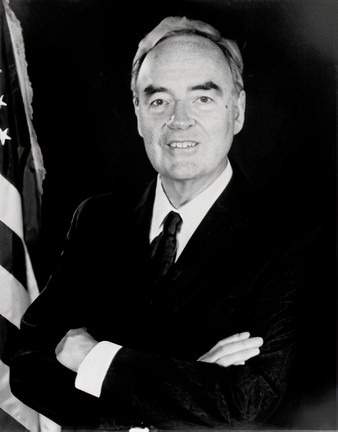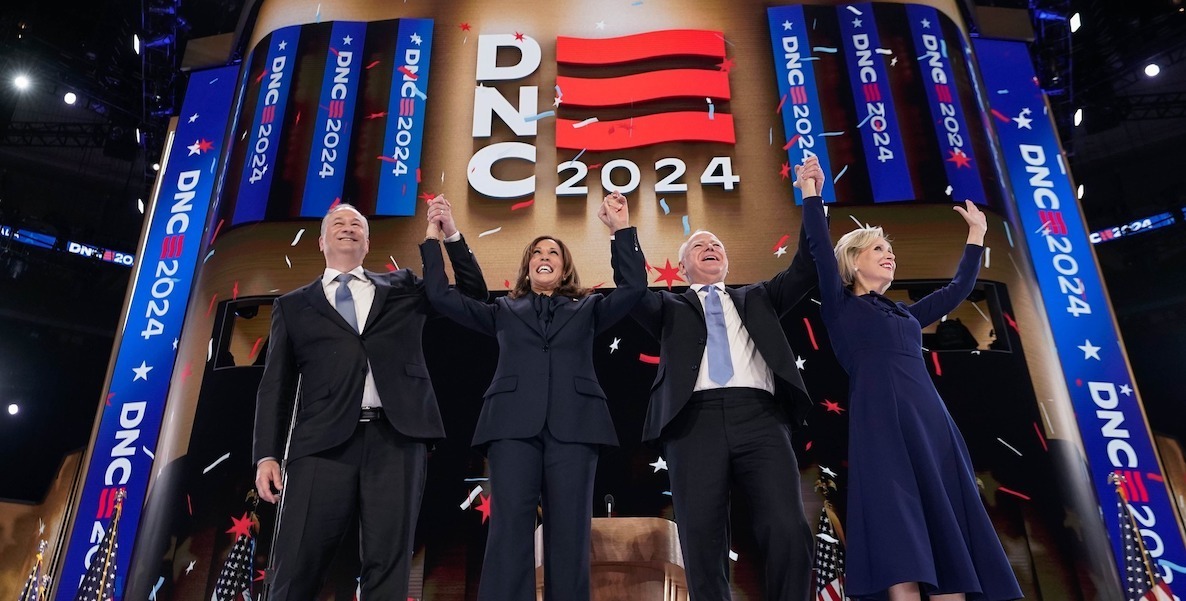Among the questions being debated about this year’s already historic and profoundly altered presidential race is whether Vice President Kamala Harris can win the trust of voters in such a brief national campaign when, without the typical long slog through the primaries, many Americans still haven’t gotten to know her.
One thing I can say from experience in the pivotal battleground state of Pennsylvania — which is also a pretty good microcosm of the U.S. as a whole — is just how overrated familiarity turns out to be when a largely unknown candidate captures the pent-up demand by voters for a new political chapter.
If there’s one thing we know Donald Trump can’t be at this late date is “new.”
This year we’ve heard a lot about “the vibes” election. First it was the generally “negative vibes” about the economy and Joe Biden’s performance, despite both historically low unemployment and decline in inflation, as well as consistent public support for his major legislative successes.
Now the “vibes” are around a surging campaign built around an appealing, but relatively novel, candidate who serves as Biden’s vice president. Even in a state filled with older, generally moderate voters like PA, that freshness is a feature rather than a bug — despite all the predictable GOP attacks on her that haven’t changed much in the past half century.
Remember the “Wofford Wave?”
Back in 1991, Harris Wofford began what many assumed would be a futile special election campaign for the U.S. Senate after the tragic death of popular, moderate Republican John Heinz in an air crash over Lower Merion. Then serving as the state’s Secretary of Labor and Industry, Wofford was almost completely unknown to Pennsylvanians when Governor Casey first appointed him to replace Heinz in May of that year.
Despite the news coverage surrounding the appointment and a resume that included working with Dr. Martin Luther King Jr. in the civil rights movement and President John F. Kennedy in the founding of the Peace Corps and serving as president of Bryn Mawr College, Wofford remained largely unknown through his first months in the U.S. Senate. It soon became clear that he would face President Bush’s Attorney General and popular former Governor Dick Thornburgh in the fast-approaching November special election.
As Wofford’s communications director, I well recall a late summer campaign swing through central PA with a small group of political reporters from The Inquirer, Washington Post and NPR. We were having a quiet lunch at a beloved, but now sadly departed, family-owned restaurant and dairy bar I knew in Lewisburg where, as it turned out, Wofford loved the malted milkshakes. One enterprising member of our traveling press corps went around to several of the booths to ask locals if they knew the guy who was quietly enjoying his sandwich and malted nearby. Not many did.

Indeed at that late date, polls showed the far better-known Thornburgh with a whopping 44 point lead. But all that changed with remarkable speed after Labor Day weekend when the campaign finally went up with its first two paid TV ads on PA stations. Neither had a voiceover narrator or wasted time on Wofford’s impressive biography. Instead, he introduced himself by speaking straight to the camera about economic issues then facing the state and nation.
The less remembered pitch of the two messages was in opposition to any NAFTA treaty that didn’t protect American workers and American jobs. The famous one was Wofford’s compelling idea, first suggested to him by a doctor in Philadelphia, that if the U.S. Constitution provides those accused of a crime with a right to a lawyer, then every American should have a right to a doctor.
Affordable health insurance was an issue, like today’s broader concerns about the high cost of living and housing, that represented the frustration for a wide swath of working families in the nation’s declining industrial economy, for whom the American dream increasingly felt out of reach.
Even in a state filled with older, generally moderate voters like Pennsylvania, Harris’s freshness is a feature rather than a bug – despite all the predictable GOP attacks on her that haven’t much changed in the past half century.
Like the first President Bush he served as U.S. attorney general, Thornburgh by then had adopted some of his party’s Reaganesque government-is-the-problem rhetoric that seemed unresponsive to the challenges many Pennsylvanians were facing in lost jobs and skyrocketing healthcare costs. Instead, he made the case that he “knew the corridors of power” in Washington — exactly the wrong argument in any “change versus status quo” political moment.
Then, as now, the GOP went for the predictable scare tactics on two fronts, raising the specter of socialism — specifically “socialized medicine.” But also the more sinister claims of liberal coddling of some dangerous, darker-skinned other — what had started three years earlier with Bush’s use of the infamous Willie Horton ad against Mike Dukakis became just one version of a playbook Trump has since perfected about the ever more ominous violent threat at home or abroad, whether about urban crime, undocumented immigrants, Muslims or even Black Lives Matters protests.
While several former GOP admakers like Stuart Stevens have since renounced such attacks they long helped produce, in 1991 they launched a TV ad misleadingly suggesting that Wofford had accepted campaign contributions from Adnan Khashoggi, a high-profile Saudi arms merchant who had been implicated in the Reagan-era Iran-Contra arms-for-hostages scandal. (The claim was based on the slender reed of a story from decades earlier when Bryn Mawr had reportedly considered a donation that was never even made from a foundation Mr. Khashoggi funded.)
But then, as now, poll and focus-group-tested attack lines can prove to be less effective when delivered in the context of the wider reality where most likely voters actually live.
Barack Obama’s 10-point margin of victory proved that, despite widespread concerns that many traditional Democratic voters would not vote for a Black candidate, a fresh, charismatic voice can nonetheless win over a solid majority of Pennsylvanians when they’re ready for a change.
To be sure, as a 65-year-old White man with a long resume in government — albeit one with a liberal past that even included his own arrest during a peaceful demonstration at the 1968 Democratic Convention in Chicago — Wofford was not likely to be as vulnerable to such attacks as a freshman senator with a Kenyan father and Muslim middle name, or a woman of color whose mother immigrated from India and father from Jamaica. Vice President Kamala Harris clearly isn’t wasting any breadth dignifying Trump’s increasingly vulgar insults of her race and gender.
The key point remains that in 1991, 2008 and 2024, the Democrats were the new faces, the lesser known candidates of change rather than the familiar status quo.
Could this be another “vibe” shift victory?
Back in October 1991, we mocked the absurd attacks on Wofford’s patriotism, decorating our campaign vans with ironic “Khashoggi Caravan” signs for his final 24-hour swing “working” across the state (when he went back to Lewisburg to help make some of those great malteds behind the counter himself). And Wofford kept surging to a remarkable 10-point landslide victory over the far more familiar and well-respected Thornburgh (who, in his last years, publicly condemned Trumpian attacks on the rule of law and his old friend Robert Mueller). In the patriotic aftermath of the first brief and successful Persian Gulf war, Wofford was the “vibe shift” that President George H.W. Bush didn’t see coming.
By 2008, our politics had already begun to change with Newt Gingrich’s Contract with America, the creation of Fox News and the beginning of social media — adding to the established popularity of snarky conservative talk radio — that all helped drive a moderate GOP candidate John McCain to add an early avatar of the populist right, a plainly unqualified Governor Sarah Palin, to his presidential ticket.
Barack Obama’s own 10-point margin of victory that year proved that, despite widespread concerns that many traditional Democratic voters — like socially conservative White union members in the industrial Southwest — would not vote for a Black candidate, a fresh, charismatic voice can nonetheless win over a solid majority of Pennsylvanians when they’re ready for a change.
Despite many changes in the shape of our politics since then, especially in the GOP, where Palin proved to the be the avatar of Trumpism the enduring lesson of the “Wofford Wave” and other elections since, including Obama’s in 2008, is that a high-spirited “vibe shift” can win in the battleground states like Pennsylvania needed for Electoral College victory.
No wonder the Harris/Walz ticket is offering not just joy, but a range of brand new popular economic proposals of their own rather than simply defending the Biden record — while also flipping the traditional script by campaigning for votes even in rural areas where former President Trump and his controversial running mate J.D. Vance must run up their margins based on the same angry, increasingly unhinged messages Trump has been pushing since he came down his escalator nine years ago, having ridden into the national conversation on his racist, and baseless, birtherism conspiracy theory about President Obama.
Now Democrats are newly energized and polls show moderate voters already seem to be shifting their way, including on the pivotal issue of abortion rights. To be sure, in a closely divided state like Pennsylvania with a declining number of swing voters, rare in our time will be the kind of bipartisan landslide Governor Shapiro won against an extremist MAGA candidate who was unacceptable to many traditional Republicans — or Wofford’s more astonishing landslide upset by an underdog 44 points behind barely two months before Election Day.
If there’s one thing we know Donald Trump can’t be at this late date is new — only more of the same, at a moment when most Americans are clearly ready to turn the page. That’s one thing that won’t change in the weeks between now and November.
David M. Stone, a former Executive Vice President for Communications and Senior Adviser to the President at Columbia University, previously served as communications director for U.S. Senator Harris Wofford and deputy chief of staff for Governor Bob Casey. He wrote a lot of speeches.
The Citizen welcomes guest commentary from community members who represent that it is their own work and their own opinion based on true facts that they know firsthand.
![]()
MORE COMMENTARY ON THE 2024 PRESIDENTIAL RACE
Left to right: Doug Emhoff, Vice President Kamala Harris, Minnesota Governor Tim Walz and Gwen Walz onstage at the Democratic National Convention, in Chicago, Illinois, Wednesday, August 22, 2024. Photo by Kit Karzen for Harris for President.



